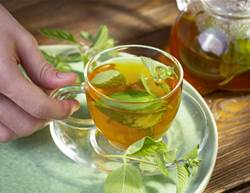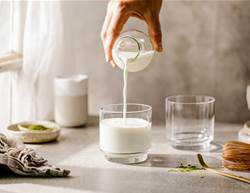Pistachios’ salty, nutty flavour makes for a delicious snack and a versatile ingredient in your cooking routine. But are pistachios actually good for you?
Though often overlooked in favour of almonds, cashews, and walnuts, these small but mighty nuts are nutritional powerhouses. “These little morsels are rich in fibre, heart-healthy fats and are a good source of satiating protein,” says registered dietitian Maya Feller.
Below, learn exactly how these protein-packed nuts support your health and why they deserve a spot in your pantry (or freezer for long-term storage).
Pistachio nutrition
According to the Australian Food Composition Database, 100 grams of raw, unsalted pistachios contain:
- Energy: 2,542 kJ
- Protein: 19.7 g
- Fat: 50.6 g
- Carbohydrates: 17.6 g
- Fibre: 10.3 g
A Protein-Rich Powerhouse
“Pistachios help fuel your body with essential amino acids,” says Feller. “As one of the highest-protein snack nuts, pistachios are an excellent addition to a well-balanced pattern of eating.”
Compared with other nuts, brown rice and lentils, pistachios provide a higher level of branched-chain amino acids (BCAAs)—leucine, isoleucine and valine—which play a significant role in muscle growth and repair. This makes them particularly beneficial for vegetarians, vegans and anyone looking to reduce meat consumption while still meeting their protein needs.
Fibre for Gut Health
“Pistachios are rich in fibre, which research shows helps regulate blood glucose levels and supports digestive health,” says Feller.
These nuts act as a prebiotic, providing nutrients for beneficial bacteria in the gut microbiome—essential for digestion, immunity and overall wellbeing. With many Australians falling short on their daily fibre intake, pistachios offer an easy solution: toss a handful onto your morning yoghurt, blend them into a smoothie or sprinkle them over a salad to effortlessly increase your fibre intake.
Vitamins and Minerals: A Nutrient-Dense Snack
“Pistachios are nutritional powerhouses loaded with antioxidants that help neutralise free radicals and combat oxidative stress in the body,” says Feller. “They also contain an impressive amount of vitamin B6, which supports brain development, immune function and nervous system health.”
But there’s more. “Pistachios are a pretty remarkable nut,” says registered sports dietitian Becci Twombley. “They are high in omega-3 fatty acids and contain three different types of antioxidants. They also offer protein, healthy fats, good carbohydrates, fibre and vitamin A. The amount of nutrition packed into a single pistachio is impressive.”
Health Benefits of Pistachios
Support Heart Health and Circulation
“Research shows that including pistachios in your daily diet can benefit cardiovascular health and lower risk factors for heart disease,” says Feller. “Nearly 90% of the fats in pistachios are mono- and polyunsaturated fats, which have been shown to help lower LDL (‘bad’) cholesterol.”
Twombley adds that pistachios also support blood flow and blood pressure. “We use them in the bullpen—when Angels players start warming up, they eat an ounce to boost circulation before going into the game,” she says. “It improves oxygenation, enhances endurance, and aids recovery post-game.”
May Reduce Inflammation
Pistachios are packed with polyphenols, plant compounds known for their anti-inflammatory properties. “Inflammation is a key driver of many diseases, particularly heart disease,” explains Twombley. “A common measure of inflammation is interleukin-6 levels in the blood and studies show that polyphenols in pistachios can help reduce this risk.”
Animal studies and clinical trials have demonstrated the antioxidant and anti-inflammatory benefits of pistachios, suggesting they could play a role in reducing chronic inflammation in the body.
Contain minimal processing
If you’re trying to cut down on ultra-processed foods, pistachios are a great choice. “[Raw] pistachios are one of the most minimally processed foods available,” says Twombley. “Nature cracks them open on the tree, and during harvesting, a machine gently shakes the tree, allowing the nuts to fall into a collection net. From there, they are sent to a drying facility and then roasted. That’s it—no excessive processing.”
Encourage Mindful Snacking
Since pistachios are often sold in their shells, they require a bit of effort to eat, which can help with portion control. “Research suggests that shelling pistachios as you eat slows down your snacking pace, making you more aware of your intake,” explains registered dietitian Samantha Cassetty, "The leftover shells serve as a visual cue, helping prevent mindless overeating.”
Potential Downsides of Pistachios
Like many nuts, store-bought pistachios can be a hidden source of excess sodium. “I check the sodium content to ensure it’s on the lower end—under 5% of the daily value for sodium,” says Feller. When purchasing pre-seasoned pistachios, aim for less than 115 mg of sodium per serving. “If you have the time, buying raw pistachios and roasting or flavouring them at home can help you control sodium intake,” she adds.
If you’re mindful of your sugar intake, it’s also best to avoid honey-roasted varieties, which often contain added sugars.
Ways to eat more pistachios
While you can snack on this nut by the handful (after removing the shell, of course!), you can also feature the nut in a variety of meals. Try sprinkling some onto salad to add crunch in lieu of croutons, mixing into oatmeal or granola or using to coat fish or chicken. Need more culinary inspiration?
Pistachios make for a satisfying snack on their own (just be sure to remove the shell first! ), but they can also be a versatile addition to meals. Sprinkle them onto salads for a crunchy alternative to croutons, mix them into oatmeal or granola or use them as a coating for fish or chicken.
-Additional reporting by Kaitlyn Phoenix
.jpg&h=630&w=1120&c=1&s=1)


.jpg&h=90&w=90&c=1&s=1)



.jpg&h=193&w=250&c=1&s=1)


